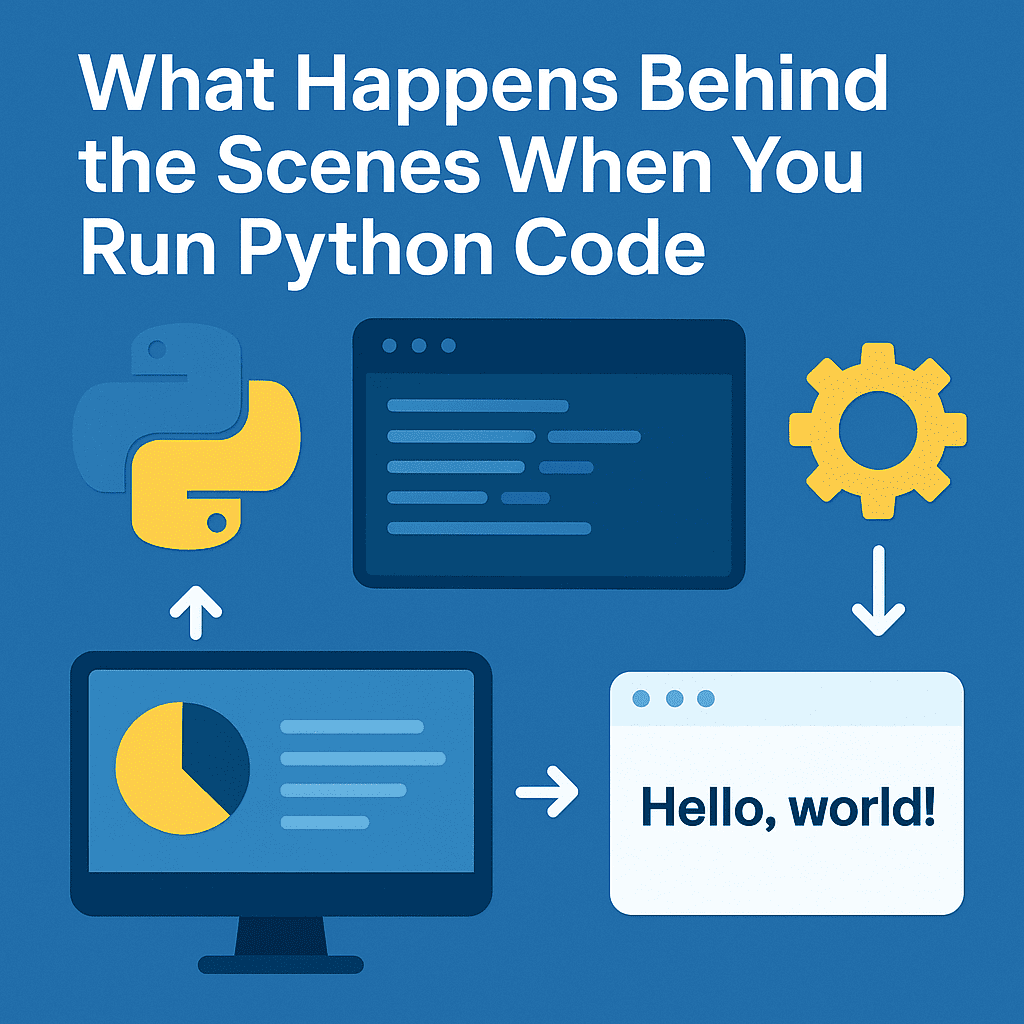What Happens Behind the Scenes When You Run Python Code

When you write a Python program and press Run, it might seem as though your computer instantly understands what to do. The output appears almost magically, and the process feels effortless. But behind that simplicity lies an intricate series of steps. Python goes through several phases before your code turns into meaningful action. Understanding what happens behind the scenes can help you appreciate Python’s design and become a more thoughtful programmer.
Read More: What Happens Behind the Scenes When You Run Python Code
The Role of the Interpreter
Python is often described as an interpreted language. Unlike languages that must be fully compiled into machine code before execution, Python executes instructions line by line using an interpreter. The interpreter acts as a bridge between human-readable code and the machine’s low-level operations. When you press Run, the Python interpreter takes control, reading your program and managing the process that transforms your written instructions into actions your computer can perform.
From Text to Tokens: The First Step
The first stage of execution begins when Python reads your source code as plain text. It then performs what is called lexical analysis, or tokenization. During this process, Python breaks the continuous stream of characters into smaller pieces called tokens. Each token represents a meaningful element of the language—such as keywords, variable names, numbers, or symbols. This step is crucial because computers do not understand spaces or punctuation the way humans do. Tokenization gives structure to your code and prepares it for deeper analysis.
Parsing and Syntax Analysis
After the code is divided into tokens, Python checks whether these tokens are arranged in a way that follows the language’s grammatical rules. This step is known as parsing or syntax analysis. Here, Python builds an internal representation of your code called a parse tree, which maps out how the different parts of the program relate to each other. If there are any syntax errors—such as missing punctuation, indentation mistakes, or invalid expressions—Python stops execution and reports the problem. Parsing ensures that your code makes logical sense according to Python’s rules before the program can proceed any further.
Compilation into Bytecode
Once the code passes the syntax check, Python translates it into bytecode, an intermediate form of instructions that are more efficient for the interpreter to execute. Bytecode is not machine code, but it is closer to what the computer can understand than the original text. This step is often invisible to the programmer, but it plays a key role in performance. Bytecode is a compact, standardized representation of your program, and it allows Python to run the same way across different operating systems and hardware types.
To make future runs faster, Python often stores the compiled bytecode in special files. This way, if you run the same program again, Python can skip the compilation stage and execute the bytecode directly.
Execution by the Python Virtual Machine
After compilation, the bytecode is handed over to the Python Virtual Machine, or PVM. The PVM is the heart of the interpreter—it takes each instruction from the bytecode and executes it in sequence. You can think of the PVM as Python’s engine, converting bytecode instructions into the actual operations performed by the computer’s processor. During this stage, Python manages variables, performs calculations, handles loops and conditions, and interacts with memory and external resources.
Memory Management and Garbage Collection
While the Python Virtual Machine executes your code, it also manages memory behind the scenes. Python automatically allocates space in memory when new objects or variables are created. It also frees up memory that is no longer in use through a process known as garbage collection. This system is based largely on reference counting—Python tracks how many parts of the program are using a given object. When no references remain, the memory can be safely reclaimed. This automation helps keep Python simple and reduces the risk of memory leaks that can occur in lower-level programming languages.
Producing the Output and Wrapping Up
Once the virtual machine finishes executing your program, it produces the final output—whether that is a displayed message, a saved file, or some change in the system’s state. Afterward, Python cleans up any temporary resources and prepares to exit gracefully. This closing stage ensures that all memory and system resources are properly released before the interpreter ends.
Visit Here : https://www.fusion-institute.com/python-whispered-what-happens-when-you-press-run-or-hit-enter
Conclusion
What seems like an instant process is actually a sophisticated series of transformations. Your code is read, analyzed, translated, and executed through multiple layers of logic and optimization. Understanding this journey helps demystify Python’s inner workings. Each time you press Run, Python quietly performs this elegant dance of interpretation and execution—turning human ideas into precise digital action.
- Art
- Causes
- Best Offers
- Crafts
- Dance
- Drinks
- Film
- Fitness
- Food
- Oyunlar
- Festival
- Gardening
- Health
- Home
- Literature
- Music
- Networking
- Other
- Party
- Religion
- Shopping
- Sports
- Theater
- Wellness



